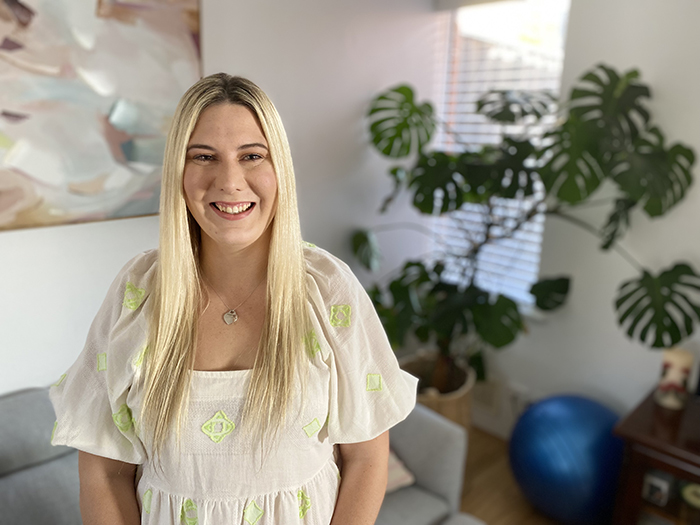New agreement uses 3D technology to help treat rare genetic disorder
 Emily Wheeler
Emily Wheeler
Last week, Channel 7 interviewed KEMH’s Gareth Baynam and Curtin Uni's Richard Palmer, about the WA face diagnostic technology that is receiving global attention, potentially unlocking the answers to a rare genetic disease.
Perth nurse Emily Wheeler, a patient of Professor Baynam’s, is one in 50,000 people who suffer from the rare genetic disorder, Hereditary Angioedema (HAE). As a result of HAE, Emily experiences swelling mainly in her stomach, adding up to 4kg of fluid to her abdomen during painful attacks that usually last a week.
But thanks to a new agreement between WA’s King Edward Memorial Hospital, Curtin University, Takeda Global, SingHealth in Singapore and FrontierSI, researchers will use 3D facial analysis technology to help understand and eventually guide the treatment of this rare disease.
Professor Baynam, Cliniface and study clinical lead, is the Head of the Western Australian Register of Developmental Anomalies at KEMH:
“The agreement is exciting news. After years of trials using our Cliniface technology to demonstrate that we can produce reference statistics of 3D facial norms, we will expand this to include the Singapore population to support more advanced, accessible and equitable diagnosis and monitoring of rare diseases in our Asia Pacific region.
“We look forward to collaborating with Takeda, SingHealth and FrontierSI as we expand further internationally and for a broad range of rare diseases”.
More information is available on the Curtin University website (external site)
Watch the Channel 7 interview

